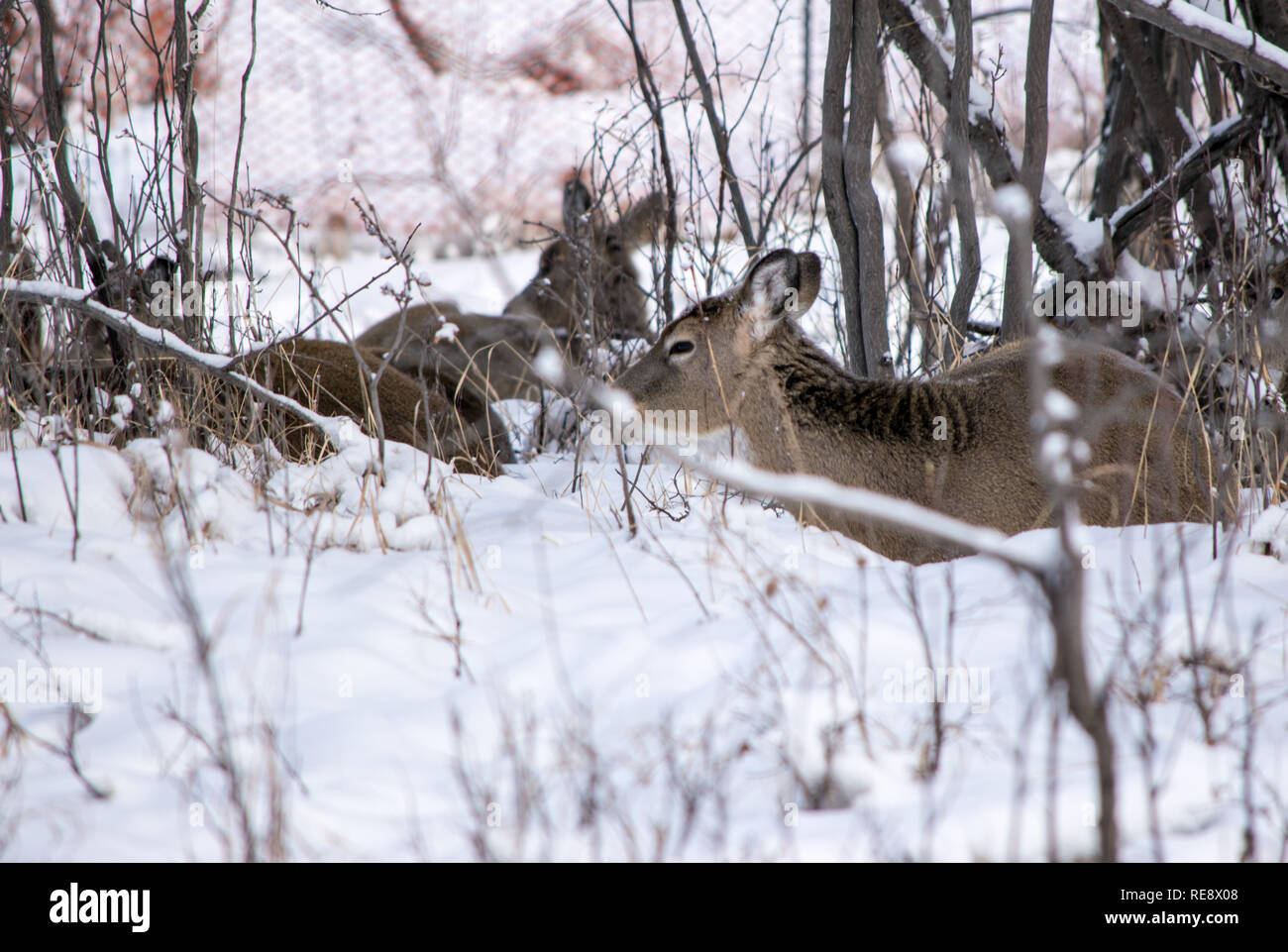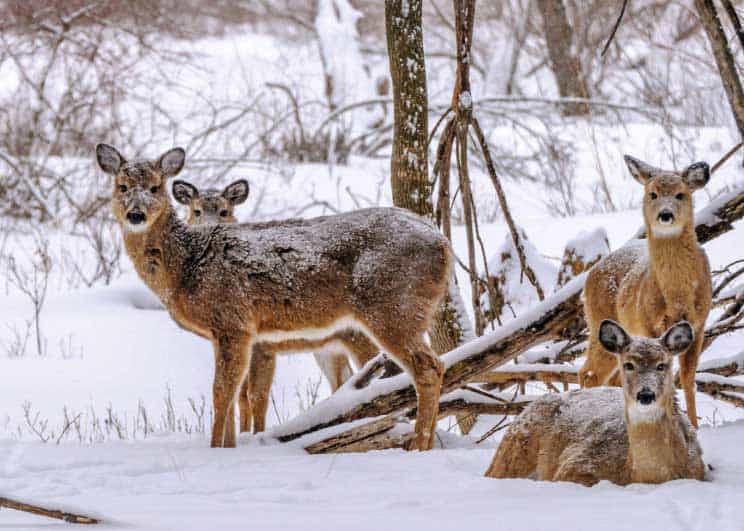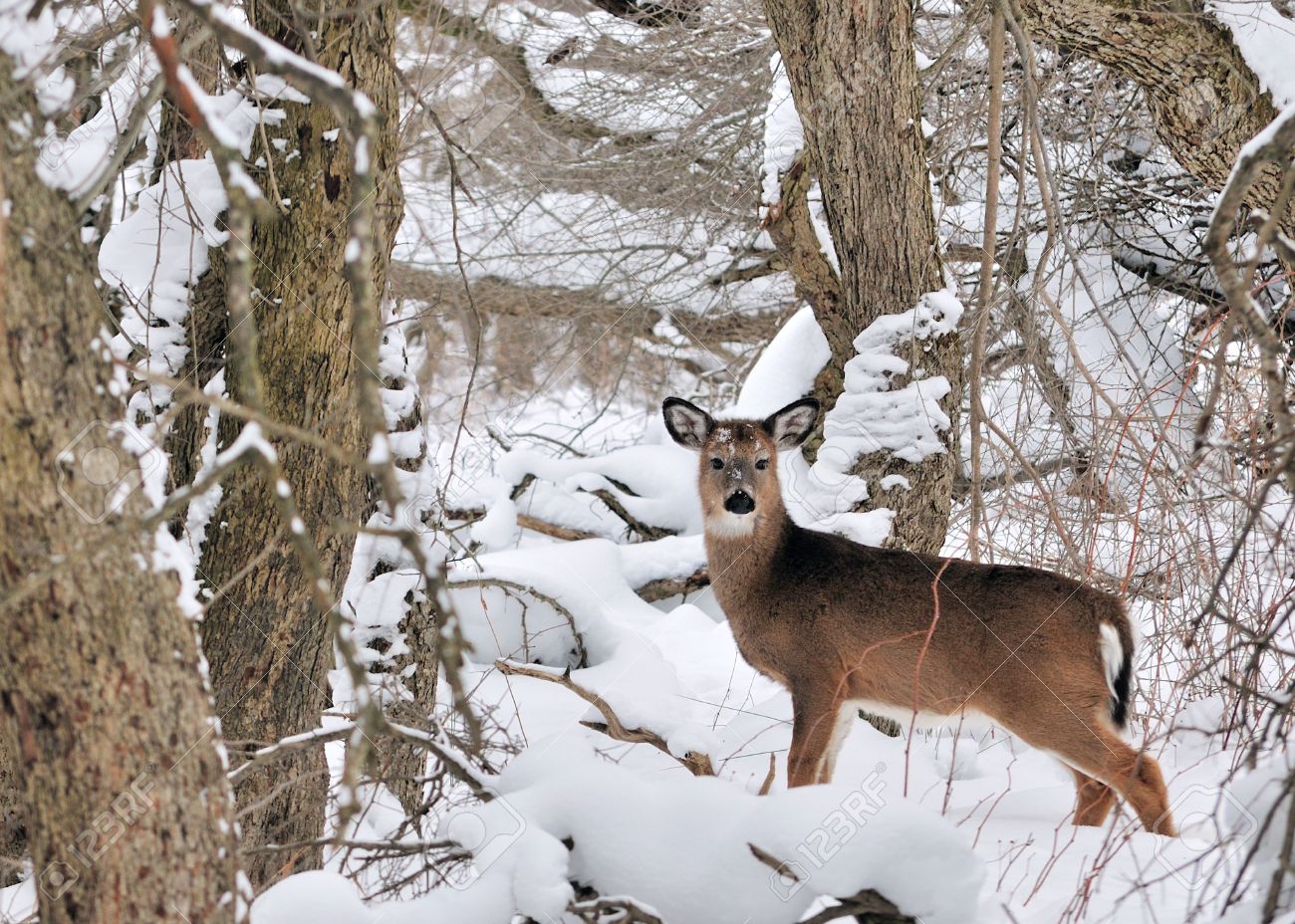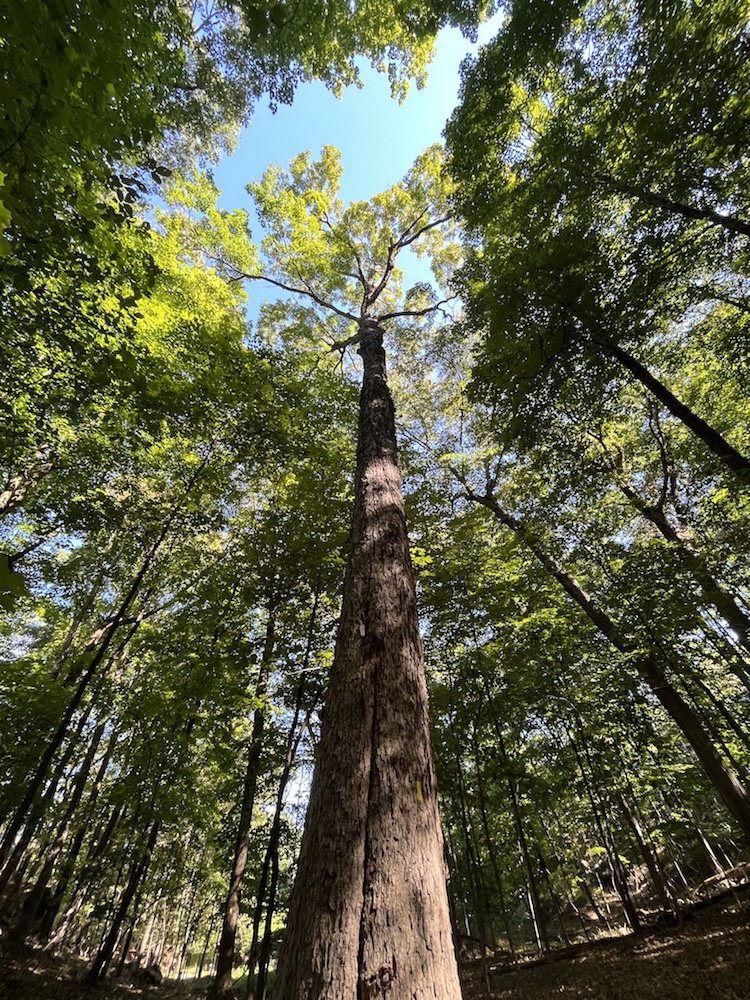Have you ever wondered, as you sit inside your warm house, when the temperature dips into the negative numbers, how do deer handle this kind of weather? Could they freeze to death?

Actually, they very seldom freeze to death and here is why.
- They prepare for winter – In the fall deer gain as much weight as possible concentrating on foods with a lot of sugars and carbohydrates. This allows them to rely on the stored fat for over 50% of their food supply.
- They reduce daily activity in the winter – This allows them to burn less fat reserves and conserve the fat reserves. Typically, a healthy doe has a ninety-day fat supply going into winter.
- They move to more sheltered areas –Deer can find warmer, less windy and less snowy areas. This would include sheltered valleys, and conifers with less snow under them. These are called “deer yards”.
- They huddle together – In these deer yards they can huddle together to use each other’s body heat to help stay warm.

- They have a winter diet – What can be most relied on is a source of water and the deer’s stored fat supply. Buds, twigs, bark, dead leaves, apples and green agriculture fields are merely a supplement. The heat created by digesting these foods is the real value.
- Their bodies are built for winter cold –
- Body size – There is a rule called Bergmann’s rule which states the further north a species lives the larger it will be and the more compact its appendages will be compared to southern relatives. This allows a species like deer to save energy and conserve heat. Florida whitetail bucks average 150 lbs. Those in Canada average 300 lbs+.
- Coat – A deer’s winter coat is 5-6 times thicker than their summer coat. It has long, hollow guard hairs and short underfur. This insulates so well snow doesn’t even melt from body heat on a deer’s back.

- Oily skin – In the winter the skin produces a special oil. This coats the skin and some of the fur. It is a water repellant and keeps wet snow and rain from soaking the deer.
- Body adaptation – Deer can stand in deep snow for days or weeks without feeling cold toes. The bottom half of their legs is composed of a keratin hoof and a long carpal bone incased in tendons and no muscle. Tendons require very little blood flow and so there is much less heat loss in the legs.
- Body temperature regulation – Deer can regulate the amount of heat certain parts of the body get. This allows them to conserve heat by directing it to vital organs.

So, can deer freeze to death? Not normally. There are times when temperatures reach minus 30 degrees Fahrenheit or lower when that is more of a possibility. They may, however, run out of food and fat reserves in March and die of starvation or predation.
If you have land you can help support deer through the harshest time of year by improving their habitat and monitoring fawn recruitment and harvesting antlerless deer.
Information for this article came from an article Matt Ross wrote for the National Deer Association.





